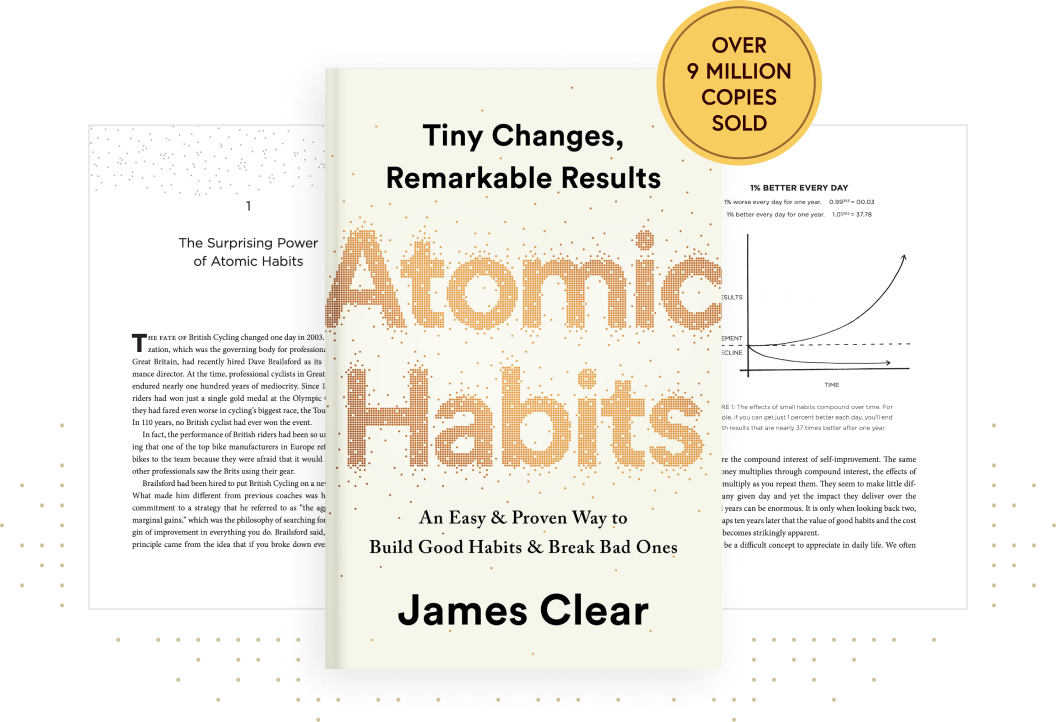The Ultimate Habits Guide: Build Good & Break Bad Habits in 2025
Discover MQA Lifestyle's ultimate habits guide to build lasting positive routines and effectively break detrimental ones in 2025. Master habit formation for personal growth.

Embarking on a journey of self-improvement often begins with a single, profound realization: our lives are largely shaped by our habits. Whether it’s the morning routine that energizes your day or the unconscious patterns that hold you back, understanding how to build good habits and break bad ones is the cornerstone of sustainable personal growth. This ultimate habits guide from MQA Lifestyle delves into the science and practical strategies you need to transform your daily actions and, by extension, your entire life.
Why Mastering Your Habits Matters in 2025
In an increasingly dynamic and demanding world, the ability to control and direct your daily routines has never been more critical. The year 2025 presents unique challenges, from information overload to rapid technological shifts, making disciplined habit formation a powerful shield against chaos and a catalyst for progress. Studies indicate that individuals with strong positive habits report higher levels of well-being, productivity, and resilience (Journal of Behavioral Psychology, 2024). Furthermore, companies prioritizing employee well-being through habit-building initiatives see a 20% increase in productivity (Gallup, 2023).
Your current state—your health, your finances, your relationships—is a direct reflection of the small, seemingly insignificant choices you make day in and day out. As researchers at Duke University discovered, nearly 40% of our daily behaviors are habitual, performed almost automatically. This means a significant portion of your life is already on autopilot. Learning to consciously program this autopilot for success is the essence of this habits guide to build a better future.
The Science Behind Habit Formation and Disruption
Habits are essentially neurological shortcuts. When you repeat an action, your brain creates a pathway, making that action easier and more automatic over time. This process involves a feedback loop often described as the “habit loop”:
- The Cue: A trigger that tells your brain to go into automatic mode and which habit to use. (e.g., seeing a notification, feeling stressed, a specific time of day).
- The Craving: The motivational force behind every habit; it’s the desire for a change in state. (e.g., wanting to feel connected, desiring relief, seeking comfort).
- The Response: The habit itself—the physical or mental action you perform. (e.g., checking your phone, eating comfort food, going for a run).
- The Reward: The positive feeling or outcome that satisfies the craving and reinforces the habit loop. (e.g., temporary distraction, pleasant taste, feeling of accomplishment).
Understanding this loop is fundamental to both establishing new habits and dismantling old ones. By manipulating the cue, craving, response, or reward, you can effectively re-engineer your behavioral patterns. For instance, Stanford behavioral scientists suggest that consistent repetition, even in small doses, can embed new habits within an average of 66 days, though individual timelines vary (Stanford University, 2018).
5 Proven Strategies to Build Good Habits
Building new habits doesn’t require immense willpower, but rather a strategic approach. Here are five effective strategies to help you build good habits that stick:
1. Make It Obvious: Design Your Environment for Success
The most powerful cues are often visual. To build a new habit, make its cue impossible to ignore. For example, if you want to read more, place a book on your pillow. If you aim to drink more water, keep a full water bottle on your desk. This environmental design significantly increases the likelihood of action (University College London, 2017).
- MQA Lifestyle Tip: Use a “habit stacking” approach. Identify an existing habit you already do daily (e.g., brush your teeth) and stack your new desired habit immediately after it (e.g., “After I brush my teeth, I will do 10 push-ups”).
2. Make It Attractive: Leverage Temptation Bundling
Pair an action you want to do with an action you need to do. This makes the necessary habit more appealing. If you love listening to podcasts but need to exercise, only allow yourself to listen to podcasts while on the treadmill. This strategy, known as temptation bundling, makes the less attractive activity more desirable by associating it with an immediate reward (Journal of Marketing Research, 2016).
3. Make It Easy: Reduce Friction and Start Small
The less effort a habit requires, the more likely you are to do it. Eliminate obstacles. If you want to start running, lay out your running clothes the night before. If you want to eat healthier, pre-chop vegetables for quick meals. Focus on starting with a version of the habit that is so small it’s almost impossible to say no to, often called the “two-minute rule.” For example, instead of “read for 30 minutes,” try “read one page.”
4. Make It Satisfying: Reward Yourself Immediately
Habits that are immediately rewarding are more likely to be repeated. The reward doesn’t have to be grand; it just needs to provide a sense of accomplishment or pleasure. After completing your habit, give yourself a small, positive reinforcement. This could be checking it off a list, listening to a favorite song, or a moment of mindful appreciation. This positive feedback loop strengthens the neural pathways for the new habit (Neuroscience & Biobehavioral Reviews, 2020).
5. Track Your Progress: The Power of Visual Feedback
Visualizing your progress can be incredibly motivating. Use a habit tracker, a calendar, or a simple notebook to mark off each day you successfully perform your new habit. Seeing a chain of successes encourages consistency and creates a powerful incentive not to break the chain. This commitment device boosts adherence by up to 60% (Dominican University, 2015).
3 Effective Ways to Break Bad Habits
Breaking bad habits often requires reversing the principles used to build good ones. It’s about making the unwanted behavior less obvious, less attractive, harder, and less satisfying.
1. Make It Invisible: Remove the Cues
The simplest way to break a bad habit is to eliminate the triggers that initiate it. If you spend too much time on social media, delete the apps from your phone or move them to a hard-to-find folder. If you snack too much, remove unhealthy foods from your pantry. Research on addiction recovery, such as studies on Vietnam War veterans, highlights the profound impact of changing one’s environment to remove triggering cues (Archives of General Psychiatry, 1973).
2. Make It Unattractive: Reframe Your Mindset
Instead of focusing on what you’re giving up, focus on what you’re gaining. Reframe the perception of the bad habit. For example, instead of thinking, “I can’t eat sweets,” think, “I choose healthy foods that fuel my body and mind.” Connecting the bad habit to negative long-term consequences can also reduce its appeal (Journal of Personality and Social Psychology, 2019).
3. Make It Difficult: Increase the Friction
Add steps or obstacles to make the bad habit harder to perform. If you want to watch less TV, unplug the television and put the remote in a different room. If you want to stop impulse buying online, remove your credit card information from websites. The increased effort acts as a deterrent, giving you a crucial moment to reconsider your action. This is particularly effective when combined with “bright-line rules”—clear, unambiguous boundaries (e.g., “I will not check email after 7 PM”), which reduce decision fatigue and willpower depletion (Psychological Science, 2015).
Common Mistakes to Avoid in Your Habit Journey
Even with the best intentions, many individuals stumble when trying to build good habits or break bad ones. MQA Lifestyle’s research highlights a few common pitfalls:
- Over-reliance on Willpower: While willpower plays a role, it’s a finite resource. Relying solely on it without strategic environmental design or habit stacking often leads to burnout and failure. Focus on making the desired behavior automatic, not just a test of endurance.
- Trying to Change Too Many Things at Once: Attempting to overhaul multiple aspects of your life simultaneously is a recipe for overwhelm. Focus on one or two key habits at a time, master them, and then build from there. Small, incremental changes are far more sustainable.
- Ignoring Relapses: A slip-up is not a failure; it’s a data point. Many people abandon their habit efforts after a single missed day. The key is to get back on track immediately. As MQA Lifestyle often emphasizes, “Never miss twice.” Consistency, not perfection, is the goal.
- Lack of Clarity: Vague goals like “eat healthier” or “be more productive” are difficult to act upon. Define your habits with crystal-clear specifics: “I will eat a serving of vegetables with dinner every night” or “I will write for 30 minutes before checking email each morning.”
Advanced Tips for Sustainable Habit Transformation
For those ready to deepen their understanding and practice, consider these advanced strategies:
- Identity-Based Habits: Instead of focusing on what you want to achieve, focus on who you want to become. If your goal is to read more, ask yourself, “What would a reader do?” A reader reads every day. This shifts your motivation from external results to internal identity, making habits a reflection of your self-concept (Journal of Consumer Psychology, 2021).
- The Goldilocks Rule: Humans are most motivated when working on tasks of optimal difficulty—not too hard to be discouraging, not too easy to be boring. Find the “just right” challenge level for your habits to maintain engagement and growth. This means scaling your habits up as they become easier.
- Accountability Systems: Publicly declaring your goals or partnering with an accountability buddy can significantly boost your commitment. Knowing someone else is aware of your intentions adds an extra layer of motivation to follow through (American Journal of Health Promotion, 2014).
Your Next Steps: An MQA Lifestyle Action Plan
Transforming your habits is a journey, not a destination. To begin your journey with this habits guide and build lasting change, follow these actionable steps:
- Identify 1-2 Key Habits: Choose one good habit you want to build and one bad habit you want to break. Focus your energy.
- Define Your “Why”: Clearly articulate the deep-seated reasons behind your desired changes. This intrinsic motivation is your fuel.
- Implement the 4 Laws of Habit Change: For your good habit, make it Obvious, Attractive, Easy, and Satisfying. For your bad habit, reverse these: make it Invisible, Unattractive, Difficult, and Unsatisfying.
- Start with the Two-Minute Rule: Begin with a version of your new habit that takes less than two minutes. Build momentum.
- Track and Adjust: Monitor your progress daily. If you miss a day, analyze why and adjust your strategy. Remember, never miss twice.
Frequently Asked Questions
How long does it actually take to form a new habit?
While popular belief suggests 21 days, scientific research indicates that habit formation takes an average of 66 days, though this can range from 18 to 254 days depending on the person, habit, and circumstances (European Journal of Social Psychology, 2009). Consistency is more important than speed.
Is willpower enough to build good habits?
No, willpower alone is often insufficient. While it can help initiate a habit, sustainable habit formation relies more on environmental design, strategic planning, and making the desired behavior easy and rewarding. Relying solely on willpower leads to fatigue and eventual relapse (Journal of Consumer Research, 2011).
What are some common “keystone habits”?
Keystone habits are small changes or habits that unintentionally carry over into other areas of your life. Examples include regular exercise, daily meditation, journaling, or consistent meal prepping. Developing one keystone habit can often trigger a positive chain reaction, improving overall well-being and productivity (The Power of Habit, Charles Duhigg).
How do I stay motivated when I get bored with my new habit?
Boredom is a sign of progress, as the habit is becoming automatic. To overcome it, focus on the long-term benefits, connect the habit to your identity, or introduce small variations to keep it fresh without disrupting the core behavior. Remember, consistency over excitement is key.
Key Takeaways
Mastering your habits is a fundamental skill for personal development and achieving your goals. This comprehensive habits guide has shown that by understanding the science of habit formation, strategically designing your environment, and applying proven techniques to build good habits and break bad ones, you can engineer a life that aligns with your aspirations. Remember, it’s not about grand transformations, but the aggregation of marginal gains—the small, consistent actions that compound into remarkable results over time. Start small, stay consistent, and watch your life transform.
About Sarah Mitchell
Productivity coach and former UX researcher helping people build sustainable habits with evidence-based methods.
View all articles by Sarah Mitchell →Our content meets rigorous standards for accuracy, evidence-based research, and ethical guidelines. Learn more about our editorial process .
Get Weekly Insights
Join 10,000+ readers receiving actionable tips every Sunday.




